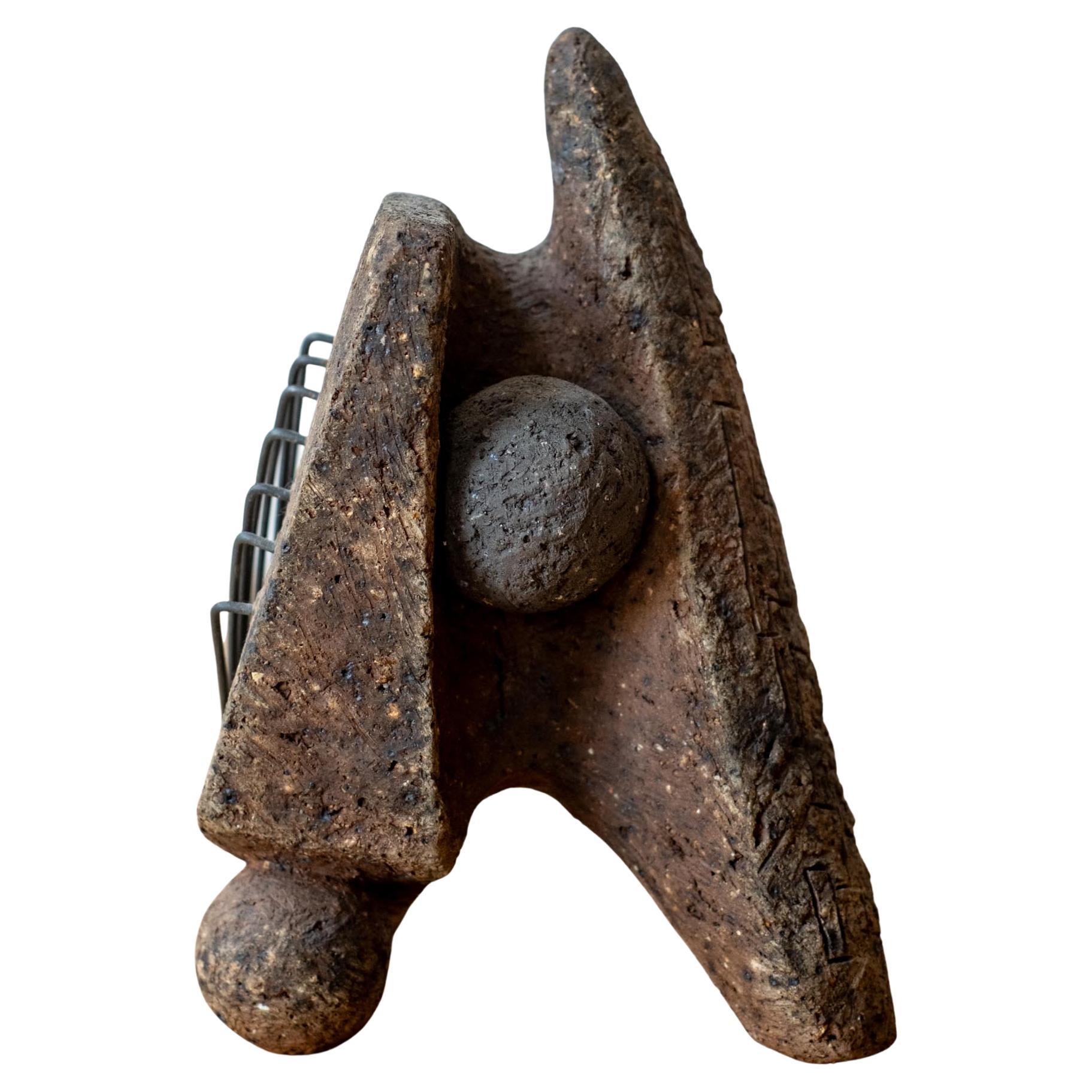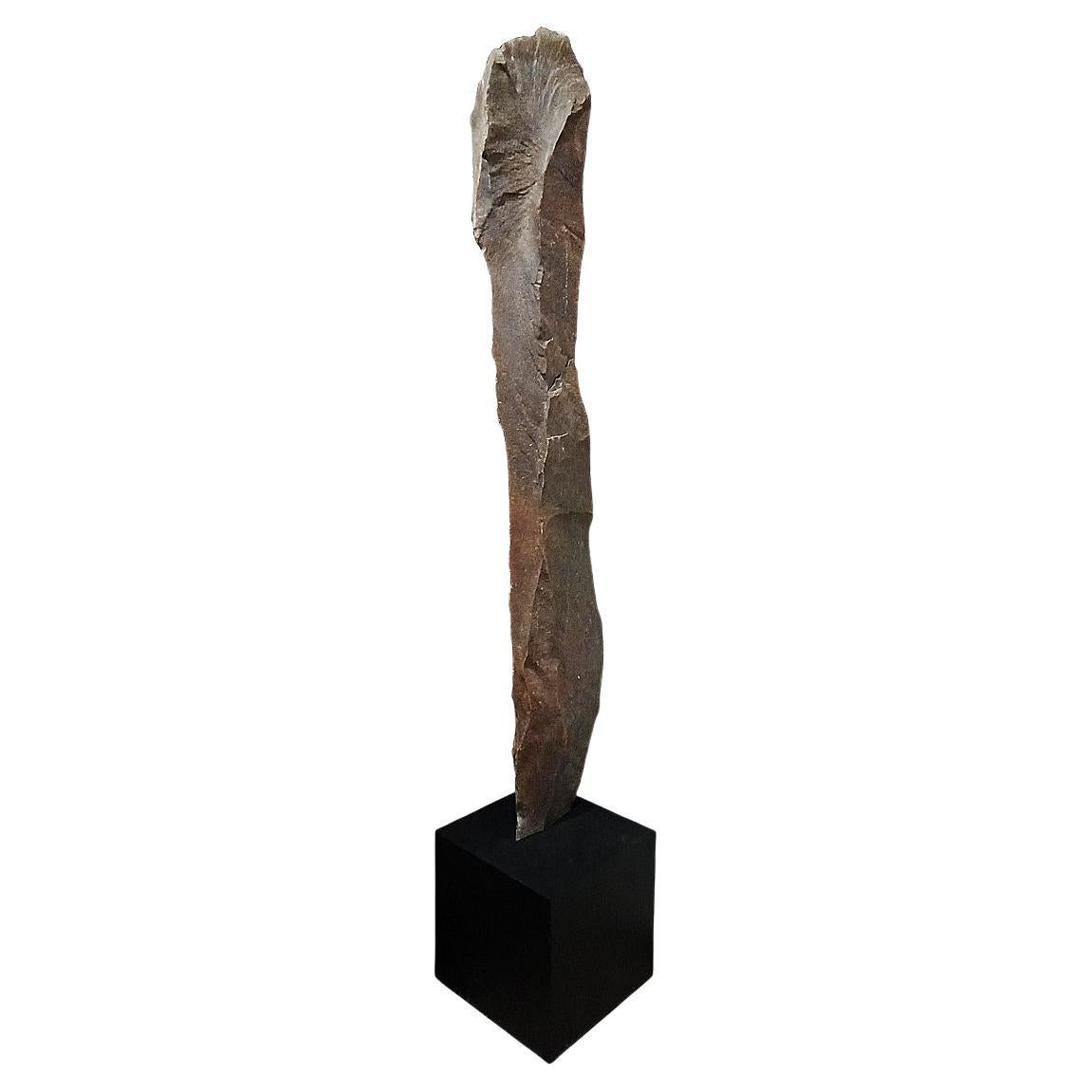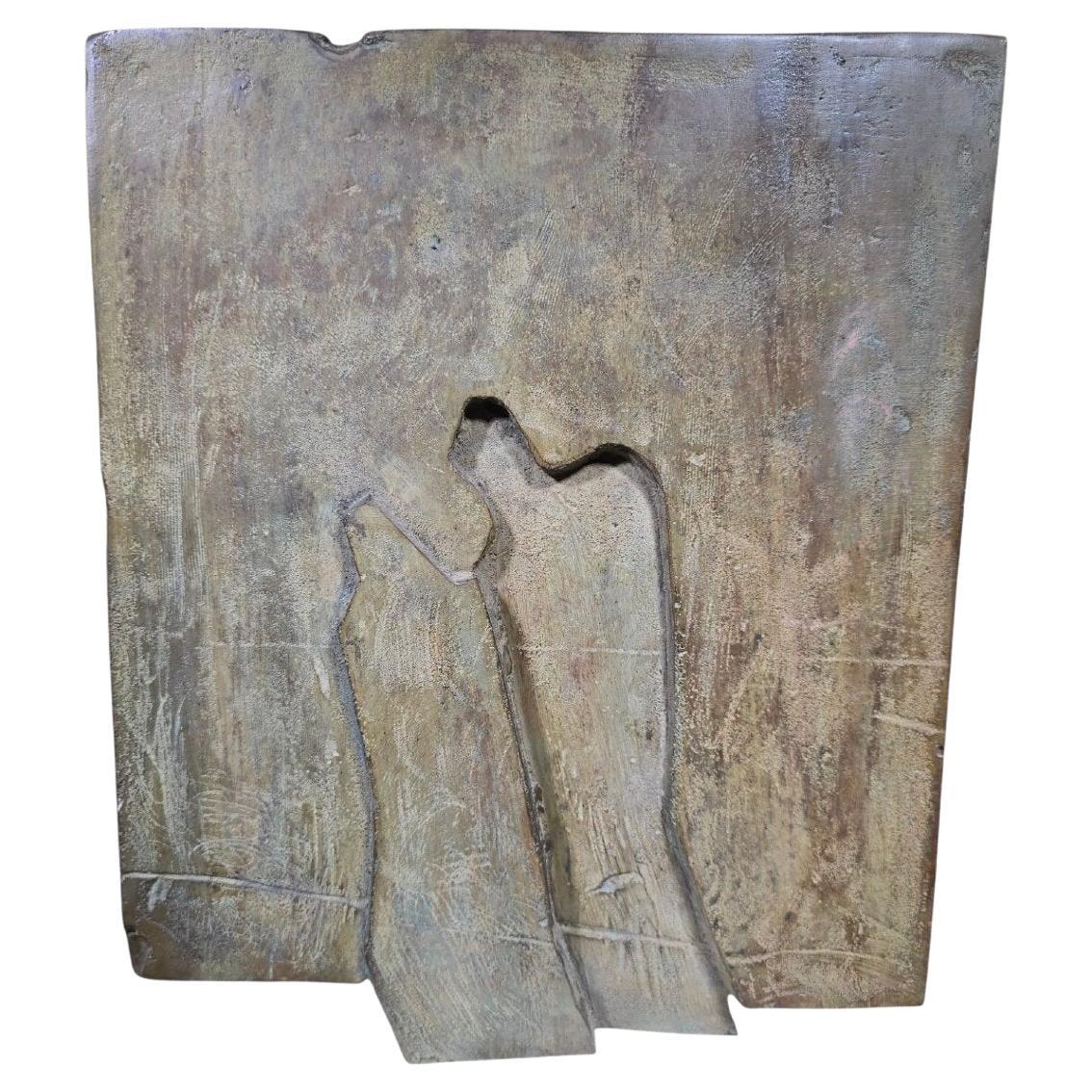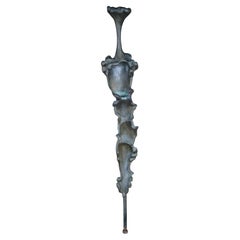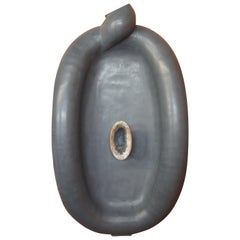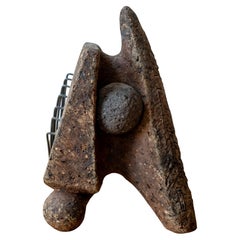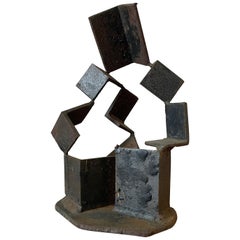Items Similar to Josep Maria Subirachs Industrial Modernist Abstract Cast Iron Sculpture
Want more images or videos?
Request additional images or videos from the seller
1 of 11
Josep Maria Subirachs Industrial Modernist Abstract Cast Iron Sculpture
$7,200
$9,00020% Off
£5,468.58
£6,835.7220% Off
€6,318.01
€7,897.5220% Off
CA$10,091.06
CA$12,613.8220% Off
A$11,293.79
A$14,117.2420% Off
CHF 5,894.49
CHF 7,368.1220% Off
MX$137,726.07
MX$172,157.5920% Off
NOK 75,441.48
NOK 94,301.8520% Off
SEK 71,415.02
SEK 89,268.7820% Off
DKK 47,150.50
DKK 58,938.1220% Off
Shipping
Retrieving quote...The 1stDibs Promise:
Authenticity Guarantee,
Money-Back Guarantee,
24-Hour Cancellation
About the Item
An Impressive Cast Iron floor sculpture by Josep Maria Subirachs b.1927. Reminiscent in form to an arrowhead or primitive blade. Josep incorporated grattage leaving the surface rough and jagged. Signed along the lower edge. Circa 1960s, Size: 41".
- Creator:Josep Maria Subirachs Sitja (Artist)
- Dimensions:Height: 41 in (104.14 cm)Width: 14 in (35.56 cm)Depth: 8 in (20.32 cm)
- Style:Industrial (In the Style Of)
- Materials and Techniques:
- Place of Origin:
- Period:
- Date of Manufacture:1960s
- Condition:good, natural distressing to metal.
- Seller Location:Dayton, OH
- Reference Number:Seller: 373191stDibs: LU5343233897692
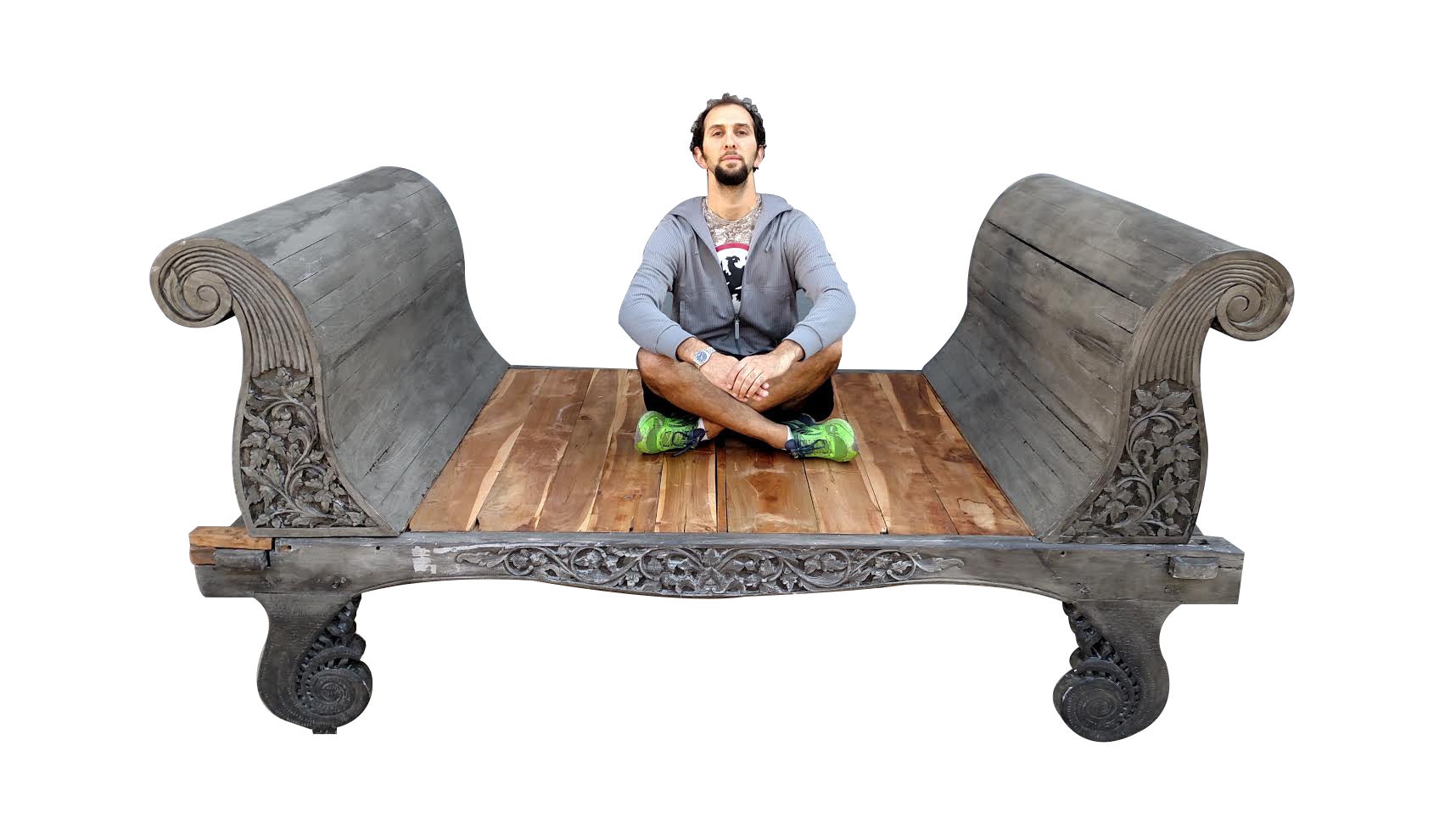
About the Seller
5.0
Platinum Seller
Premium sellers with a 4.7+ rating and 24-hour response times
Established in 2010
1stDibs seller since 2020
1,586 sales on 1stDibs
Typical response time: <1 hour
- ShippingRetrieving quote...Shipping from: Dayton, OH
- Return Policy
Authenticity Guarantee
In the unlikely event there’s an issue with an item’s authenticity, contact us within 1 year for a full refund. DetailsMoney-Back Guarantee
If your item is not as described, is damaged in transit, or does not arrive, contact us within 7 days for a full refund. Details24-Hour Cancellation
You have a 24-hour grace period in which to reconsider your purchase, with no questions asked.Vetted Professional Sellers
Our world-class sellers must adhere to strict standards for service and quality, maintaining the integrity of our listings.Price-Match Guarantee
If you find that a seller listed the same item for a lower price elsewhere, we’ll match it.Trusted Global Delivery
Our best-in-class carrier network provides specialized shipping options worldwide, including custom delivery.More From This Seller
View AllJosep Maria Subirachs Industrial Modernist Abstract Cast Iron Wall Sculpture
By Josep Maria Subirachs Sitja
Located in Dayton, OH
An Impressive Cast Iron wall hanging sculpture by Josep Maria Subirachsb. 1927. Reminiscent in form to an arrowhead or primitive blade. Josep incorporated grattage leaving the surfac...
Category
Mid-20th Century Industrial Abstract Sculptures
Materials
Iron
$6,000 Sale Price
20% Off
Nita Sunderland "Standing Woman" Cast Bronze Abstract Modern Sculpture 60"
By Nita K. Sunderland 1
Located in Dayton, OH
Standing Woman by Nita Sunderland, Features an abstract form of a Standing women. Circa 1960s Mounts via iron pipe along base.
Dimensions:
60"h x 9.5" x 8"
Category
Vintage 1960s Modern Abstract Sculptures
Materials
Bronze
$5,200 Sale Price
20% Off
Factory by Don Harvey Industrial Iron Art Sculpture Steampunk Expressionism
By Don Harvey
Located in Dayton, OH
"Factory by Don Harvey measure: 74"
Don Harvey is an American Postwar & Contemporary artist who was born in 1941
Don Harvey’s artwork explores the tensions between opposites: s...
Category
Vintage 1980s American Industrial Abstract Sculptures
Materials
Metal
$2,800 Sale Price
20% Off
1991 Jack Carter Carved Modern Abstract Tortoise Wall Art Sculpture
Located in Dayton, OH
1991 Jack Carter hand carved and painted abstract modern wall art sculpture
Wall medallion sculpture, features modern styling with tortoiseshell...
Category
1990s Modern Wall-mounted Sculptures
Materials
Hardwood, Paint
$800 Sale Price
20% Off
1991 Jack Carter Carved Modern Abstract Tortoise Wall Art Sculpture
Located in Dayton, OH
1991 Jack Carter hand carved and painted abstract modern wall art sculpture.
Wall medallion sculpture, features modern styling with tortoise she...
Category
1990s Wall-mounted Sculptures
Materials
Hardwood, Paint
$800 Sale Price
20% Off
Leonardo Nierman Mid-Century Modern Onyx Marble Abstract Sculpture MCM
By Leonardo Nierman
Located in Dayton, OH
Leonardo Nierman (born November 1, 1932), full name Leonardo Nierman Mendelejis, is a Mexican artist mostly known for his painting and sculpture. He at first wanted to be a violinist...
Category
Mid-20th Century Mid-Century Modern Abstract Sculptures
Materials
Onyx, Marble
$800 Sale Price
20% Off
You May Also Like
Abstract Modernist Bronze Sculpture by Ivan Kozaric, Yugoslavia 1960s
Located in Beograd, RS
Abstract, modernist sculpture done in bronze by pne of the leading Yugolsav artists, Ivan Kožarić. The work is signed on the back of the sculpture.
Modernist sculptor Ivan Kožarić, ...
Category
Vintage 1960s Croatian Modern Abstract Sculptures
Materials
Bronze
Saúl Moreno Mexican Modernist Abstract Stone and Metal Sculpture
By Isamu Noguchi
Located in San Diego, CA
Mexican modernist carved stone and metal abstract sculpture by Saúl Moreno. Signed by the artist.
Last year there was a retrospective exhibition of the Mexican artist, Saúl Moreno ...
Category
Vintage 1960s Mexican Mid-Century Modern Abstract Sculptures
Materials
Stone, Metal
Large Indonesian Stone Sculpture on Stand
Located in New York, NY
A tall stone sculpture hand-carved in Indonesia, mounted on a black metal cube stand. Narrow slate. The sculpture itself is 10" Wide x 5" deep x ...
Category
2010s Indonesian Organic Modern Abstract Sculptures
Materials
Stone, Metal
$3,640 Sale Price
35% Off
Patinated Steel Modernist Sculpture
Located in St.Petersburg, FL
Unusual welded steel sculpture which consists of multiple pieces attached at the corners producing a floating appearance.
Category
Vintage 1970s American Mid-Century Modern Abstract Sculptures
Materials
Steel
"Sculpture by Agustín Ibarrola Goicoechea (Basauri, Biscay, 1930)"
Located in Madrid, ES
"Sculpture by Agustín Ibarrola Goicoechea (Basauri, Biscay, 1930)"
Patinized bronze on marble base — Numbered 41/100
Overall dimensions: 41 x 30 x 10 cm
A sculptural work by the ren...
Category
Mid-20th Century Spanish Modern Abstract Sculptures
Materials
Bronze
Mid-Century Modern Sculpture by Alessio Tasca, Italy, 1970s
Located in Brussels, BE
Mid-Century Modern Ceramic by Alessio Tasca, Italy, 1970s
Category
Vintage 1970s Abstract Sculptures
Materials
Terracotta
More Ways To Browse
Arrowhead Vintage
Josep Maria Subirachs
C Jere Early
Cosmin Florea
Funk Ceramic
Haitian Wood Sculpture
Henge Furniture
Kiwi Sculpture
Leontine Furcy
Magiscope Sculpture
Mid Century Modern Soapstone Sculpture
Murano Christmas Tree
Murano Glass Christmas Tree
Salvatore Messina
Studios Loho
Bauermeister Mary
Bronze Mask African
Bruno Giorgi


